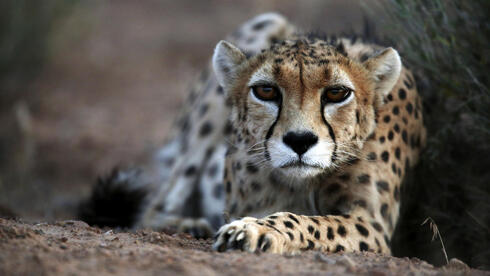The Asian cheetah, resembling its West African cousin (Acinonyx jubatus hecki) but with a slightly smaller head, shorter legs and more muscular neck, sports light beige to yellowish-brown fur with unevenly scattered black spots. Now facing extinction, only 17 specimens remain in the world — with 12 in Iran.
Adult Asian cheetahs measure 112-135 cm (44-53 inches) in body and head length, with tails spanning 66-84 cm (26-33 inches) and weigh 34-54 kg (75-119 lbs), with males typically larger.
As the fastest land animal, it can reach speeds of 120 km/h (75 mph) over short distances, preying on small hoofed animals like Indian and Persian gazelles, wild goats and hares.
Alongside the northern lynx (Lynx lynx) and Persian leopard (Panthera pardus saxicolor), it is one of three big cat species remaining in Iran. Critically endangered, the Asian cheetah (Acinonyx jubatus venaticus), also called the Iranian cheetah, has a wild population estimated at just 12 to 17 individuals.
Since 1996, the International Union for Conservation of Nature (IUCN) has listed it as “critically endangered,” one step from “extinct in the wild.” Once widespread across the Middle East, Central Asia and India, it now survives only in Iran, primarily in central and eastern deserts and protected areas like the Khar Turan National Park, known for its rich biodiversity.
The cheetah faces severe threats, including a drastic decline in prey due to illegal hunting and competition with domesticated animals, as well as habitat loss from road construction and agriculture.
“These developments hinder its movement and increase risky human interactions,” said Prof. Amiyaal Ilany from Tel Aviv University’s School of Zoology and Steinhardt Museum of Natural History. Low genetic diversity, due to the small population, further weakens its survival chances.
Iran’s 1979 Islamic revolution, transforming the country from a pro-Western monarchy under Shah Mohammad Reza Pahlavi to a theocratic Islamic republic under Ayatollah Ruhollah Khomeini, intensified pressures on wildlife. Increased hunting and habitat destruction decimated the cheetah population.
The UN Development Program and Global Environment Facility funded the Cheetah Conservation Project in the early 2000s but budget cuts and international sanctions on Iran halted progress.
“Conservation is a low priority in Iran’s post-revolution reality, despite its remarkable biodiversity,” Ilany noted. He highlighted past Israel-Iran ties that facilitated wildlife exchanges, now severed, with Iranian conservationists even jailed as alleged spies, further hampering efforts.
Success stories, like China’s recovery of the giant panda (Ailuropoda melanoleuca) through decades of research and hunting bans and India’s revival of the Asian lion (Panthera leo persica) through breeding and community cooperation, show recovery is possible.
In 2016, the IUCN reclassified the panda as “vulnerable” rather than endangered. However, Iran’s geopolitical tensions and sanctions limit funding for such efforts and the loss of three captive-born cheetah cubs two years ago deepened local conservationists’ frustration.
The Asian cheetah once roamed southern Israel’s Arava region until its extinction around 1960, with the last sighting in 1959 by a truck driver. “Its speed couldn’t save it from armed hunters, who saw big game as status symbols,” said Dotan Rotem, an ecologist with Israel’s Nature and Parks Authority.
“Iran’s open plains, similar to the Arava, are its last refuge but its smaller jaws and head make it vulnerable, even to lions in Africa.”
